Liège is a vibrant and historic city located in the French-speaking region of Wallonia in Belgium. Here is a detailed description of the city:
- History:
- Liège has a rich history that dates back to Roman times. It played a significant role in the medieval period as a major center for trade and industry.
- Over the centuries, Liège has been a princely state, a prominent ecclesiastical center, and an industrial hub.
- Geography:
- Liège is situated along the Meuse River in eastern Belgium, close to the borders with Germany and the Netherlands.
- The city is surrounded by hills and has a diverse topography, offering scenic views.
- Economy:
- Historically, Liège was known for its steel industry, and the city’s economic landscape was heavily influenced by this sector.
- In recent years, there has been diversification in the economy, with a focus on technology, logistics, and healthcare.
- Cultural Heritage:
- Liège boasts a wealth of architectural and cultural heritage. The city’s historical center features medieval buildings, cathedrals, and charming cobblestone streets.
- The Prince-Bishops’ Palace, St. Paul’s Cathedral, and the Montagne de Bueren staircase are among the notable landmarks.
- Education:
- Liège is home to the University of Liège, one of Belgium’s major universities. It contributes to the city’s vibrant academic and research community.
- The university has a significant impact on the cultural and intellectual life of the city.
- Cultural Scene:
- Liège has a lively cultural scene with theaters, galleries, and museums. The Royal Opera of Wallonia and the La Boverie Museum are prominent cultural institutions.
- Festivals, concerts, and events contribute to the city’s dynamic cultural atmosphere.
- Riverfront Development:
- The Meuse River plays a central role in the city’s landscape. In recent years, there has been a focus on developing the riverfront for recreational purposes, including parks and promenades.
- Public Transportation:
- Liège has an efficient public transportation system, including buses and a train station connecting the city to other Belgian and European cities.
- The city is part of the broader transportation network in the region.
- Market Squares and Shopping:
- The city center features vibrant market squares like Place Saint-Lambert and Place du Marché, where locals and tourists gather.
- Liège offers a mix of shopping experiences, from high-end boutiques to local markets.
- Diversity of Neighborhoods:
- Liège is characterized by diverse neighborhoods, each with its own unique atmosphere. From the historic city center to more residential areas, the city caters to various lifestyles.
- Local Cuisine:
- Liège is known for its culinary specialties, including the famous Liège waffles, boulet à la Liégeoise (a local meatball dish), and a variety of Belgian chocolates.
Liège is a city that seamlessly combines its historical charm with modern developments. Its cultural richness, architectural heritage, and economic diversity make it a captivating destination in the heart of Europe.
Vectormap.Net provide you with the most accurate and up-to-date vector maps in Adobe Illustrator, PDF and other formats, designed for editing and printing. Please read the vector map descriptions carefully.

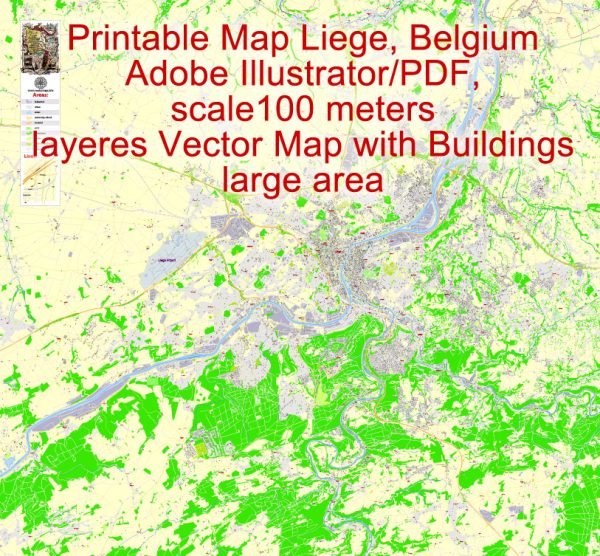
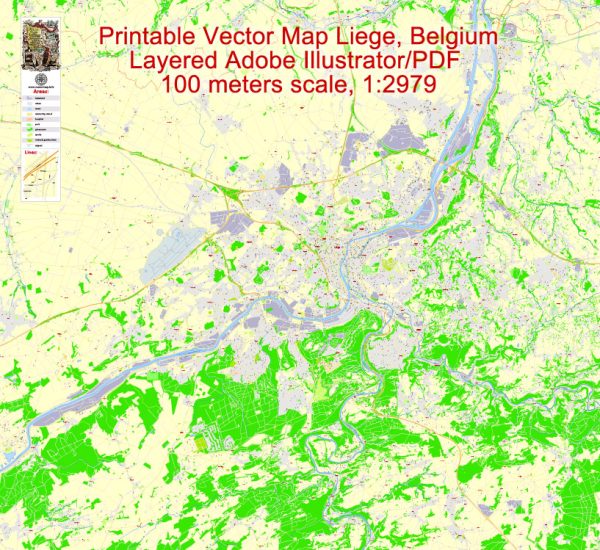
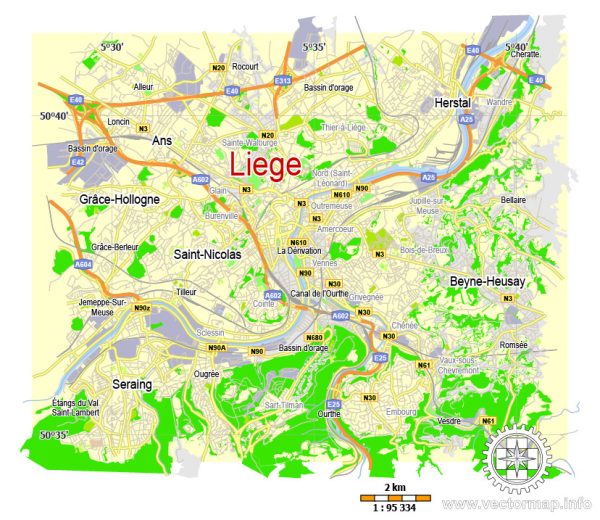
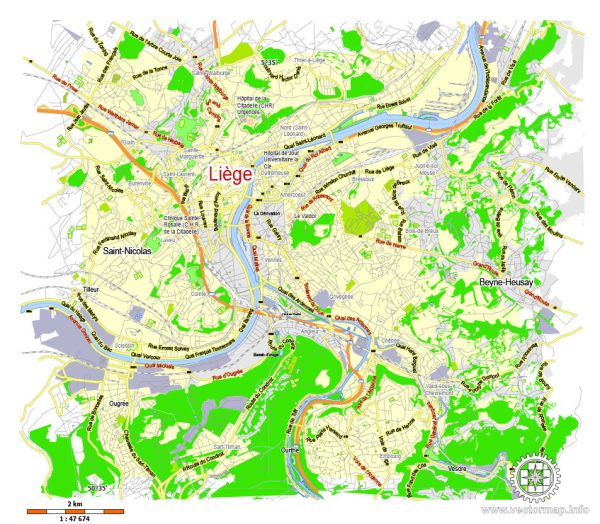
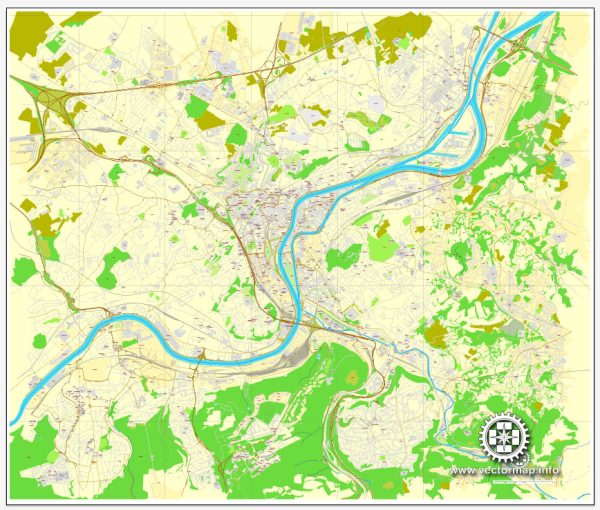
 Author: Kirill Shrayber, Ph.D.
Author: Kirill Shrayber, Ph.D.